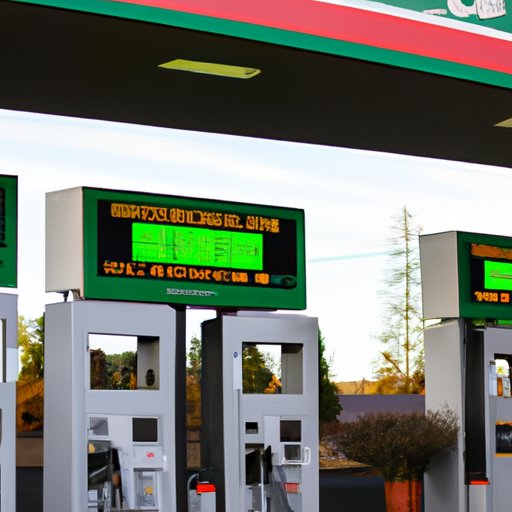
Introduction
For many people visiting or moving to Oregon, one of the most confusing aspects of the state’s culture is the gas-pumping law. Unlike most other states in the U.S., Oregon prohibits drivers from pumping their own gas. This law has been a source of confusion and frustration for some motorists, but for others, it is simply a way of life. This article aims to explore the reasoning behind the law, as well as its impacts on consumers and businesses in the state.
History of the Gas Pumping Law in Oregon
In 1951, Oregon became the first state in the U.S. to allow self-service gas stations. However, this decision was short-lived. In the 1970s, the country faced an oil crisis, and many states imposed restrictions on fuel consumption to mitigate the impact. Oregon was no exception, and in 1979, the state passed a law banning self-service gas stations for most of its citizens. Currently, the only people allowed to pump their own gas in Oregon are those driving motorcycles, low-population counties, and seniors with valid licenses and certified disabilities.
The Benefits of Full-Service Gas Stations
For many people in Oregon, the gas-pumping law is not a hindrance, but a welcome convenience. One of the primary benefits of full-service stations is that customers do not have to leave their cars on a cold or rainy day. Additionally, full-service stations can offer a range of additional services for customers, such as checking tire pressure, filling windshield wiper fluid, or even cleaning the car’s windshield or mirrors.
Safety Concerns at Self-Service Gas Stations
Given the potential hazards of self-service gas stations, it is no wonder why Oregon has opted to mandate full-service stations for most drivers. There are risks associated with both gasoline and the process of fueling a car, which can result in spills and fires. However, gas stations in Oregon are prepared for these risks, and equipment such as fire extinguishers, spill containment kits, and fire suppression systems are readily available at all full-service stations. Furthermore, gas attendants undergo rigorous safety training to minimize any risks associated with fueling a vehicle.
The Economic Impact on the Community
One of the major benefits of Oregon’s gas-pumping law is that it supports small business owners who own gas stations in the state. Many full-service gas stations are independently owned and operated, and these businesses are able to provide jobs and contribute to the local economy. According to a study conducted by the National Employment Law Project, full-service gas stations in Oregon are responsible for creating up to 13,500 jobs annually, as compared to the 2,000 jobs projected to be created by self-service stations.
Analyzing the Pros and Cons
Despite the benefits of Oregon’s gas-pumping law, there are certainly drawbacks. Many people are frustrated with the law and view it as an outdated regulation that should be repealed. Some drivers feel that the law limits their freedom and infringes upon their ability to make choices about how they fill up their cars. However, those who support the law argue that it provides safety and employment benefits that wouldn’t be available if Oregon were to adopt self-service gas stations entirely.
How Other States Handle Gas Pumping Regulations
Across the country, gas pumping regulations vary from state to state. New Jersey is the only other state that currently mandates full-service gas stations for all drivers. Oregon and New Jersey are unique in their full-service requirements, but most states allow self-service, although some restrict it during specific hours or for certain types of fuel. Reasons for regulating gas pumping vary, but most often fall into categories like safety, price control, and employment protections.
Conclusion
The gas-pumping law in Oregon is a unique and longstanding aspect of the state’s culture. Despite the confusion it causes for some, the law has benefits for both consumers and businesses alike. Whether you are a resident of Oregon or just passing through, the gas-pumping law is something to be mindful of when you’re filling up your car.




